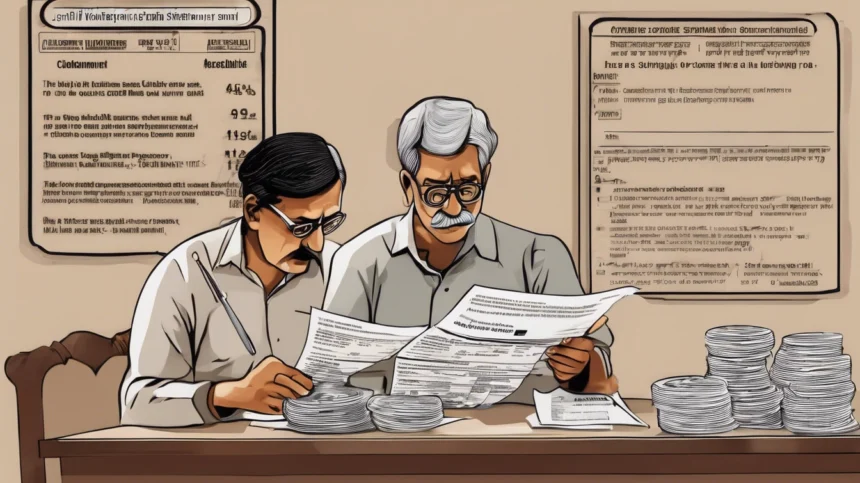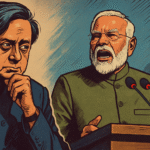If you’ve ever wondered what it’s like to be in a long-term relationship with your savings account, the latest announcement from the government might just be your annual Valentine’s Day heartbreak or delight. The Small Savings Schemes, including everyone’s favorite Public Provident Fund (PPF) and Sukanya Samriddhi Yojana, will retain their current interest rates for yet another quarter (April-June).
Yes, you heard it right—no love for your savings this time either! The government has decided to keep the interest rates unchanged for the fifth straight quarter. What’s the reason behind this decision? How does it affect your investments? And most importantly, is there a silver lining somewhere in this rather ‘unchanged’ cloud?
- 🚦 The Status Quo: What’s Staying the Same?
- 🧐 Why No Change? The Government’s Perspective
- 💔 What This Means for You: The Heartbreak Edition
- 📈 The Silver Lining: Why This May Not Be So Bad
- 💡 What Should Investors Do? The Game Plan
- 1. Diversify Your Portfolio
- 2. Use Small Savings Schemes as a Safety Net
- 3. Keep an Eye on Future Announcements
- 📅 The Bigger Picture: Is Change Coming?
- 📌 The Bottom Line: Unchanged, But Not Unimportant
Let’s break it all down.
🚦 The Status Quo: What’s Staying the Same?
The Department of Economic Affairs announced that the interest rates on Small Savings Schemes will continue as before.
Here’s a quick breakdown of the most popular schemes:
| Scheme | Interest Rate (April-June) |
|---|---|
| Public Provident Fund (PPF) | 7.1% |
| Sukanya Samriddhi Yojana (SSY) | 8.2% |
| Senior Citizen Savings Scheme (SCSS) | 8.0% |
| National Savings Certificate (NSC) | 6.8% |
| Kisan Vikas Patra (KVP) | 6.9% |
| Post Office Savings Account | 4.0% |
While PPF and SSY continue to fetch relatively higher interest rates, schemes like the Post Office Savings Account feel like the forgotten child in a large family.
🧐 Why No Change? The Government’s Perspective
Before you raise your fists in frustration, let’s try to understand the government’s logic here.
The interest rates for Small Savings Schemes are usually determined based on the yields of government securities of comparable tenures. In simpler terms, if the government is getting low returns on its investments, it doesn’t have the incentive to offer high returns to the public.
But here’s the kicker: The rates have been retained for the fifth straight quarter. That’s more than a year of unchanged interest rates! If this were a relationship, the government would be the partner who forgot your birthday, anniversary, and everything else in between.
The move is also aimed at balancing fiscal management. Collections under small savings schemes are used to part-finance the fiscal deficit. So, while you may not be getting a higher return, you can take solace in the fact that your investment is helping the government manage its finances. (Isn’t that comforting? No? Okay, moving on.)
💔 What This Means for You: The Heartbreak Edition
For conservative investors who have been relying on Small Savings Schemes for steady, risk-free returns, this announcement feels like a cold splash of water.
- PPF at 7.1%? Great, but hardly life-changing.
- Sukanya Samriddhi Yojana at 8.2%? Better, but only if you have a girl child and a lot of patience.
- National Savings Certificate at 6.8%? Let’s just say you’d be better off looking for coins under the couch.
The truth is, the world of investments is moving at breakneck speed. Stocks, mutual funds, and even cryptocurrencies are attracting investors like bees to honey. And here’s our good old Small Savings Schemes, stubbornly standing still.
📈 The Silver Lining: Why This May Not Be So Bad
Hold your horses! All is not lost. There’s a reason why millions of Indians continue to trust Small Savings Schemes.
1. Guaranteed Returns
Unlike the stock market rollercoaster, Small Savings Schemes offer a predictable, guaranteed return. When the world of investments feels like a bad episode of a soap opera, there’s comfort in predictability.
2. Tax Benefits
Schemes like PPF and SSY offer significant tax deductions under Section 80C of the Income Tax Act. So, while the interest rate may seem less attractive, the tax benefits can still sweeten the deal.
3. Financial Discipline
Small Savings Schemes force you to keep your money locked in for the long haul, which, in turn, encourages financial discipline. This is particularly beneficial for those who lack the willpower to save regularly.
💡 What Should Investors Do? The Game Plan
So, you’ve been dealt the same old hand by the government. What next?
1. Diversify Your Portfolio
Don’t put all your eggs in the PPF basket. Explore equity mutual funds, debt funds, and even stocks if you’re comfortable with a bit of risk.
2. Use Small Savings Schemes as a Safety Net
While these schemes may not offer the best returns, they do provide a secure fallback option. Consider them as the low-risk component of your portfolio.
3. Keep an Eye on Future Announcements
The government can’t keep these rates unchanged forever. Keep an eye on quarterly updates and adjust your investment strategy accordingly.
📅 The Bigger Picture: Is Change Coming?
The interest rates for Small Savings Schemes are usually reviewed quarterly. But if the past five quarters are anything to go by, you can expect this status quo to last a while.
However, with rising inflation and changing economic conditions, the government may eventually be forced to revisit these rates. So, stay tuned and keep your financial strategy flexible.
📌 The Bottom Line: Unchanged, But Not Unimportant
While the unchanged rates may seem like a letdown, it’s important to remember why Small Savings Schemes exist in the first place—they provide stability, security, and tax benefits.
So, before you write them off as dull and unworthy, consider their role in your overall financial portfolio. After all, even a slow-moving tortoise can win the race—if paired with the right hare.
For now, keep investing wisely, stay informed, and who knows? The next quarterly update might just bring a smile to your face.
Until then, keep calm and watch your savings grow (slowly, but surely)!












